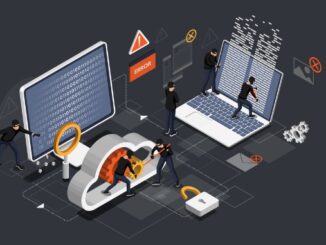![]()
As a school business leader, securing sensitive student and staff data through access control and monitoring is vital to maintaining trust and compliance with data protection regulations
CREDIT: This is an edited version of an article that originally appeared on SME Today
It is estimated that over 90% of hybrid and remote workers, including those in education, use personal devices for work daily. While this flexibility offers benefits to staff, it also introduces significant security risks for schools. As employees access sensitive student data and other critical school resources from smartphones, laptops and personal devices, the potential for cyberattacks and data breaches increases dramatically. In fact, more than half of UK schools have reported experiencing some form of cybersecurity incident or attack in the past year.
For school business managers, this highlights the importance of implementing robust cybersecurity policies, especially in hybrid and remote work environments where personal devices are often used for school-related tasks. It is essential to establish clear security protocols, provide ongoing employee training and ensure secure connections when accessing student records and other sensitive information. By taking these precautions, school business managers can reduce the risks posed by personal devices and help safeguard their organisation against cybersecurity threats.
Lost or Stolen Devices
The loss or theft of personal devices in a school setting poses a major security risk, with 40% of data breaches caused by such incidents. If a device is lost or stolen, it could expose confidential student information, school records, and financial data.
To safeguard against these risks, school business leaders should take these proactive measures:
Encrypt Devices: Ensure that all personal devices used by staff for schoolwork are encrypted. This will protect sensitive information even if a device is lost or stolen.
Remote Data Wipe: Implement remote wipe technology that allows you to erase data from a lost or stolen device, ensuring that confidential school data remains protected.
Use Secure Access Controls: Require staff and students to use strong, unique passwords, and consider setting up multi-factor authentication for systems with sensitive data.
Comprehensive Training and Policies: Provide training to staff on data security and establish a clear process for reporting lost or stolen devices, enabling quick action to protect information.
Unsecured Networks
When school staff connect to public Wi-Fi networks – whether at cafes, hotels, or other public places – there are inherent risks. These networks are typically unsecured, making it easy for cybercriminals to intercept sensitive school data, such as student records, financial information, or internal communications.
To protect against these threats, school business leaders should implement the following strategies:
Enforce VPN Usage: Require all staff to use a VPN when accessing school systems on public Wi-Fi. A VPN encrypts the data being sent, ensuring that any communications are protected from hackers.
Educate Staff on Security Risks: Provide training to staff members about the dangers of using unsecured Wi-Fi networks and the importance of using a VPN for any work-related activity outside the school’s secure network.
Control Access to Sensitive Information: Limit access to confidential student records and school financial data when staff are using public Wi-Fi. Ensure that sensitive tasks are only carried out over secure networks or through a VPN.
Access Control and Monitoring
In educational settings, safeguarding access to student records and school data is a top priority. Unauthorised access to sensitive information can lead to serious data breaches, compromising student privacy and trust.
To mitigate these risks, school business leaders should implement the following measures:
Establish Access Controls: Implement strict access control policies to ensure only authorised personnel can access student records, financial data, and other sensitive school information. Use role-based access controls (RBAC) to ensure staff can only access data relevant to their role, and review permissions regularly.
Conduct Regular Access Audits: Regularly audit access logs to monitor who is accessing sensitive data and identify any unauthorised access attempts. This will help ensure compliance with data protection laws and provide early detection of potential security issues.
Monitor for Suspicious Activity: Implement monitoring tools to track access logs for unusual activities, such as accessing data during odd hours or multiple failed login attempts. Immediate detection allows for a prompt response and mitigates the risk of a data breach.
For school business leaders, protecting sensitive student and staff information is a critical responsibility. By implementing effective access controls, conducting regular audits and monitoring access logs for suspicious activities, schools can safeguard their data and ensure compliance with privacy regulations. These measures will help create a secure learning environment and protect the integrity of the school’s data systems.


Be the first to comment